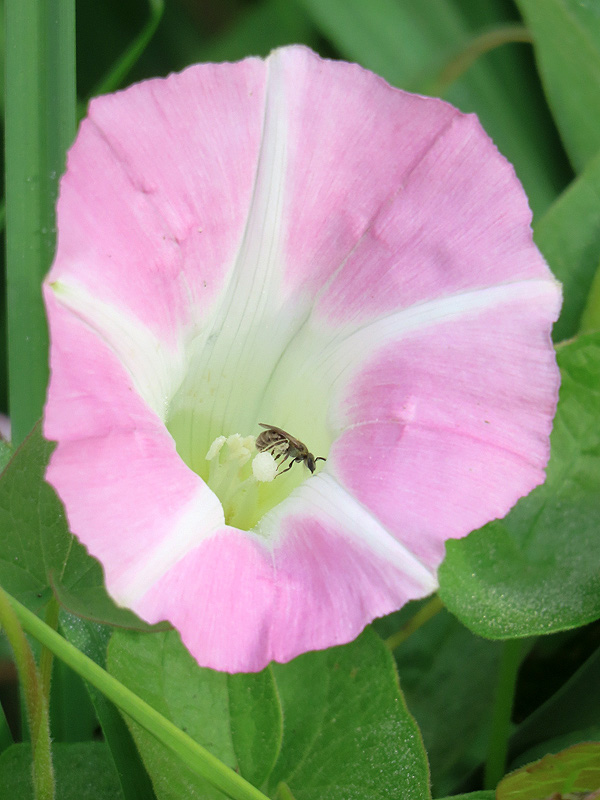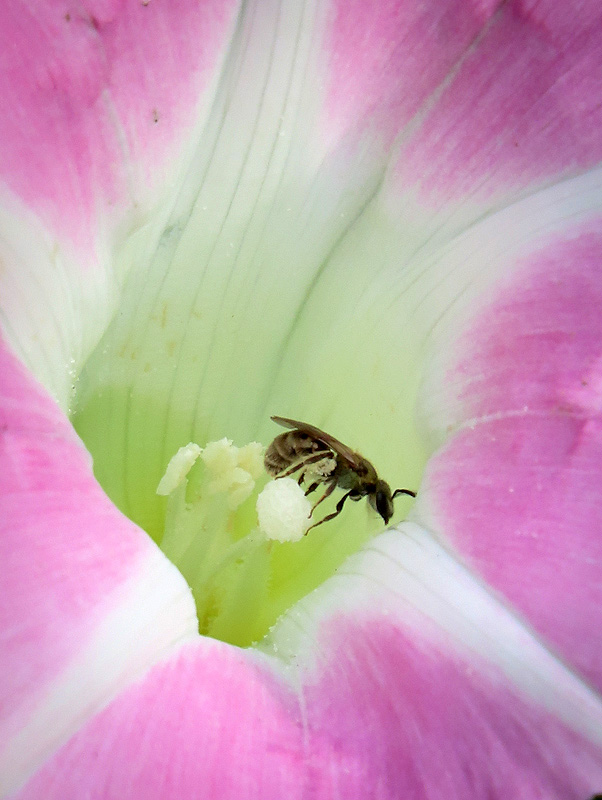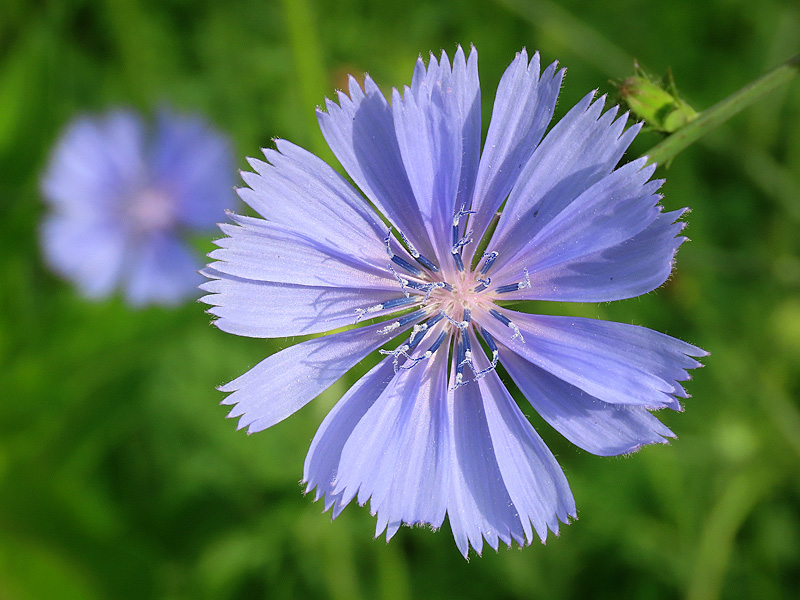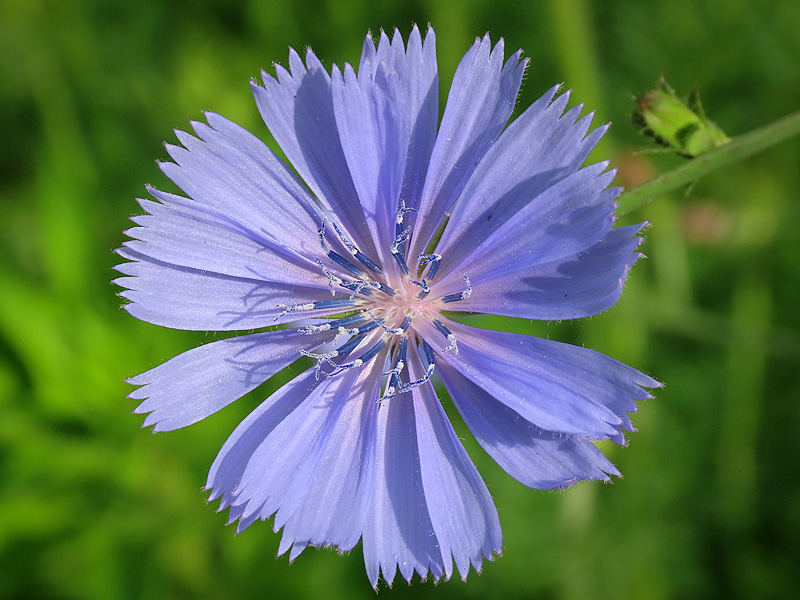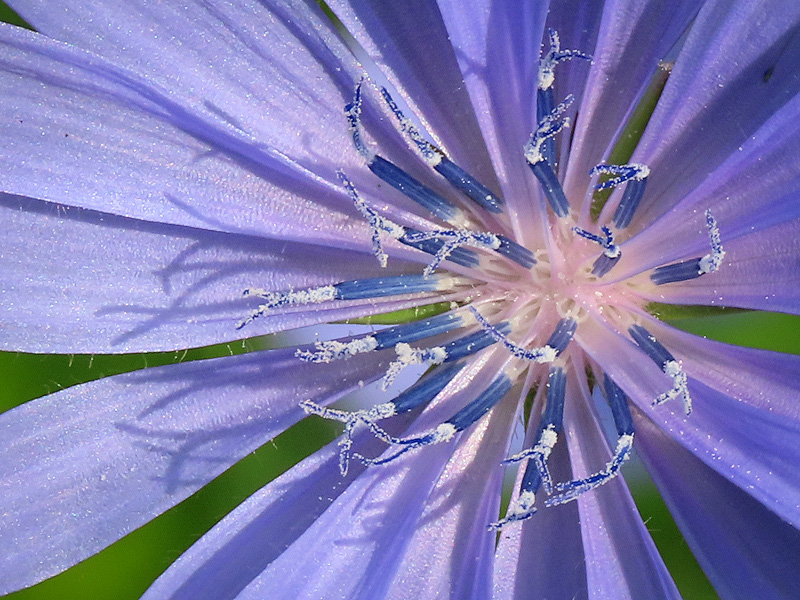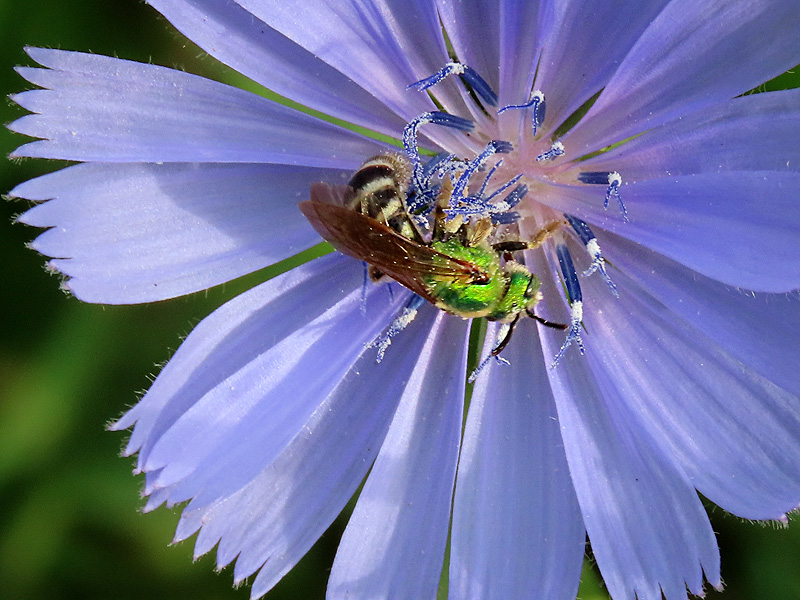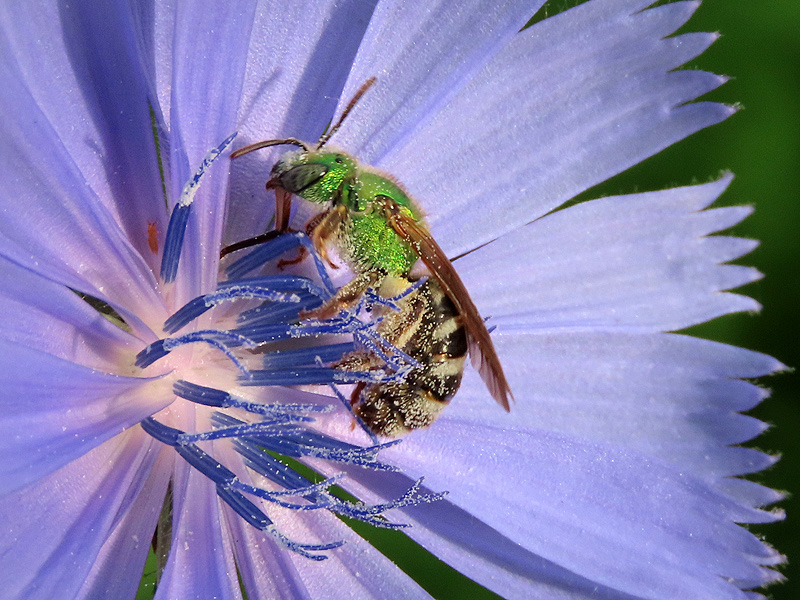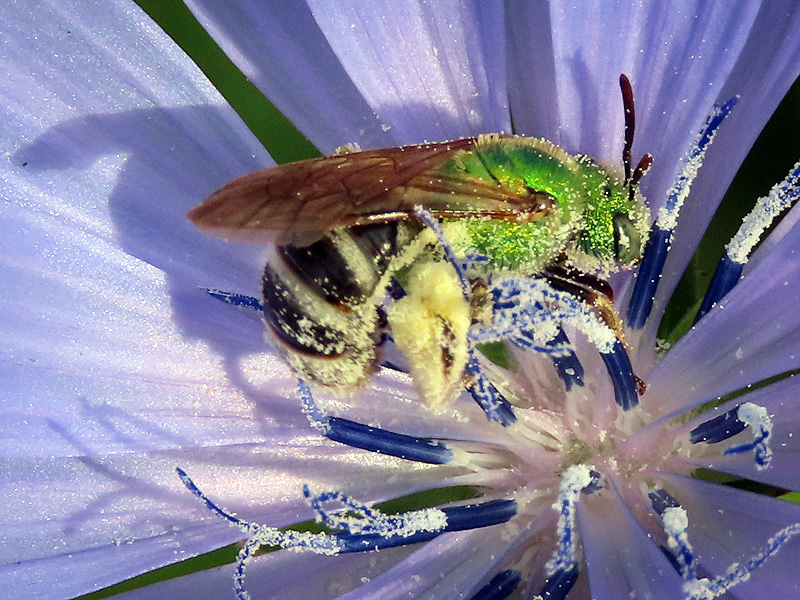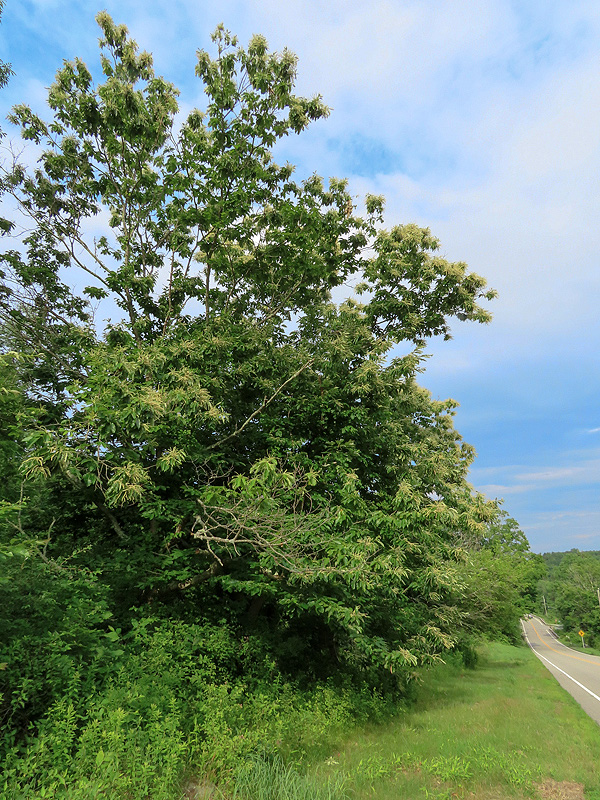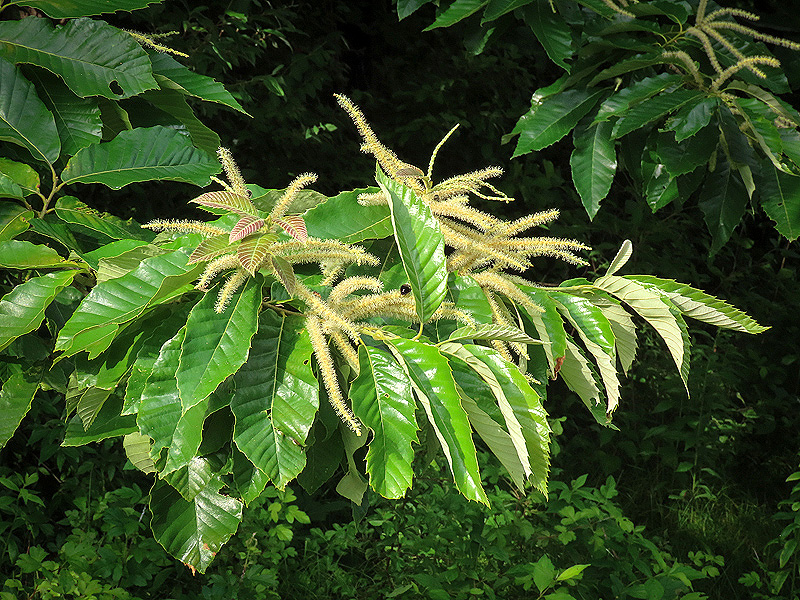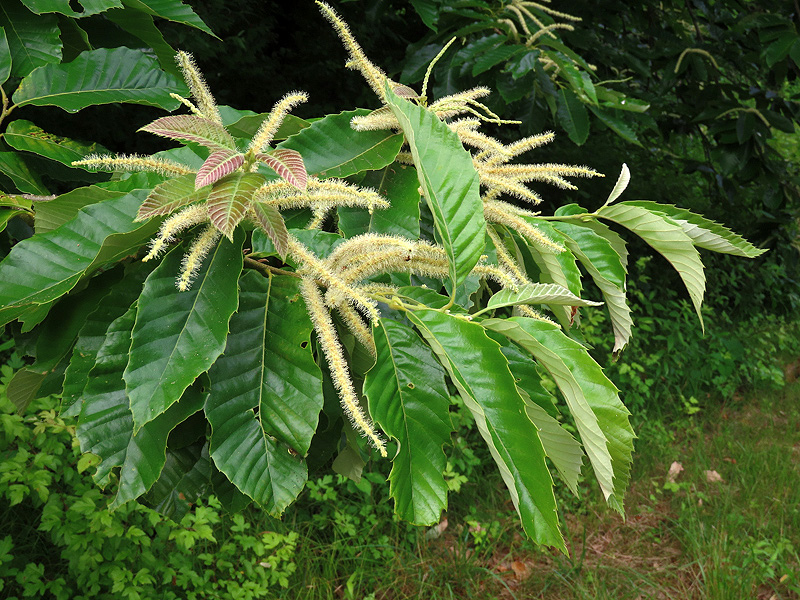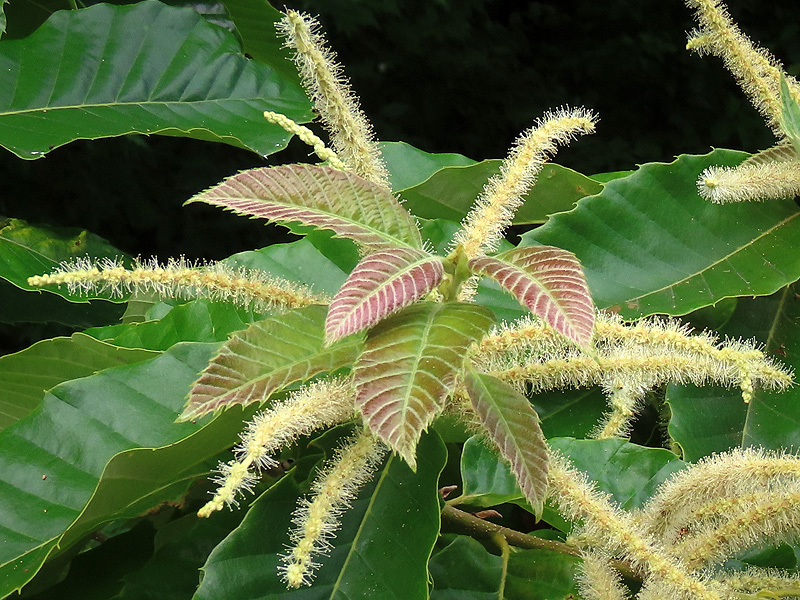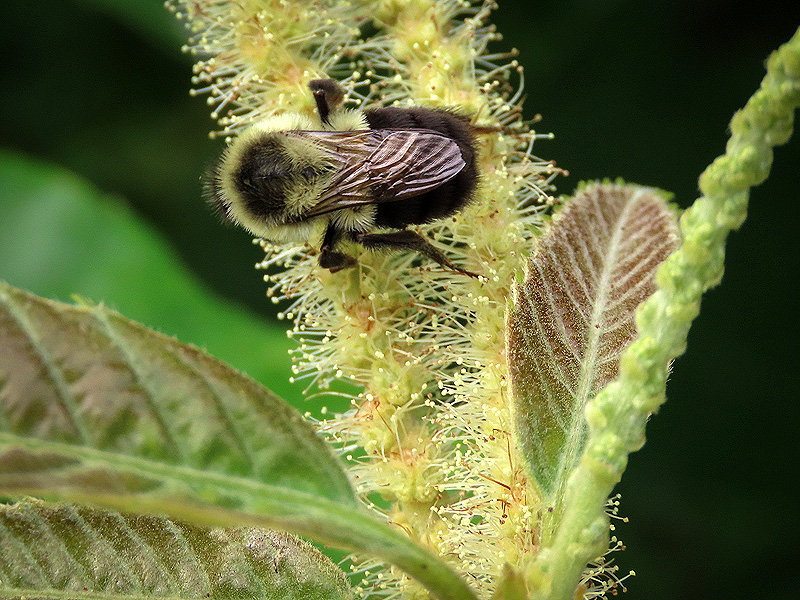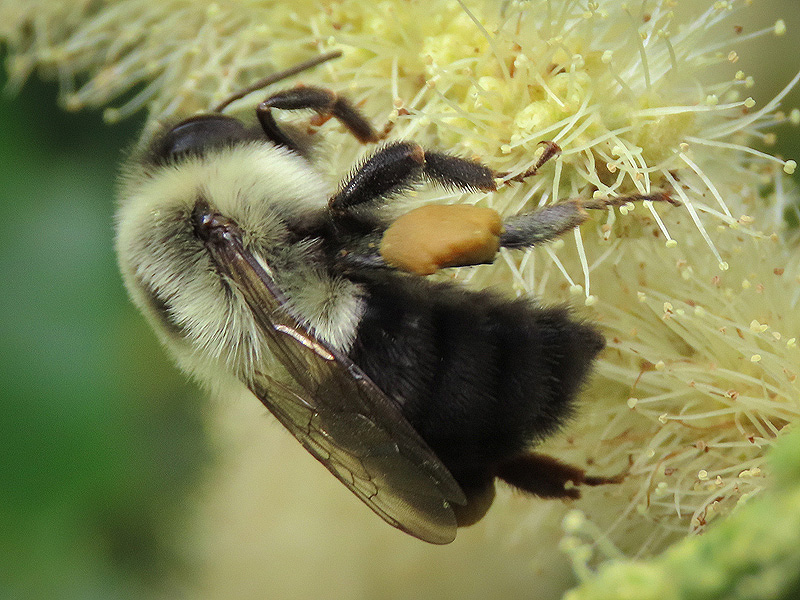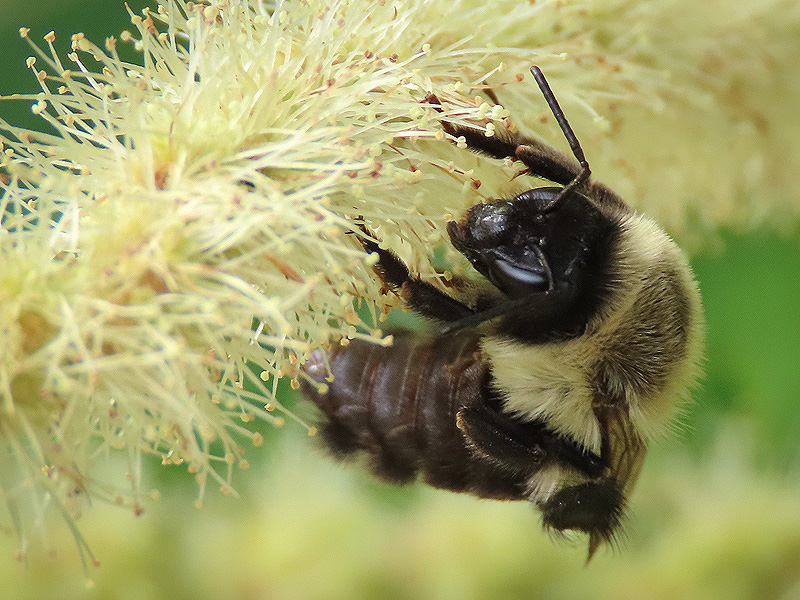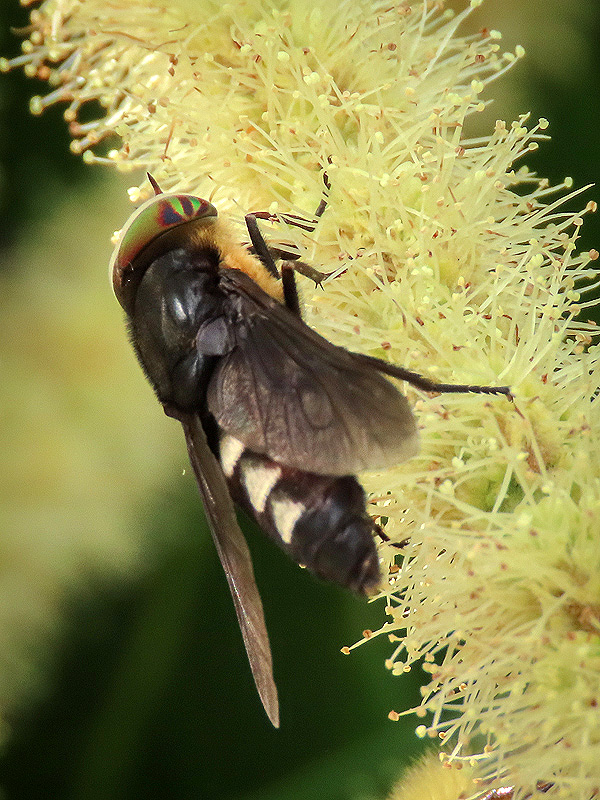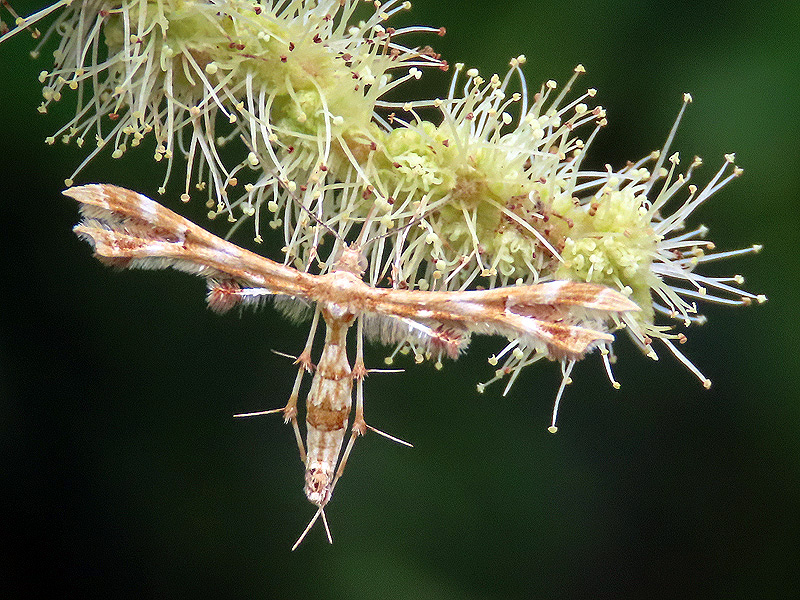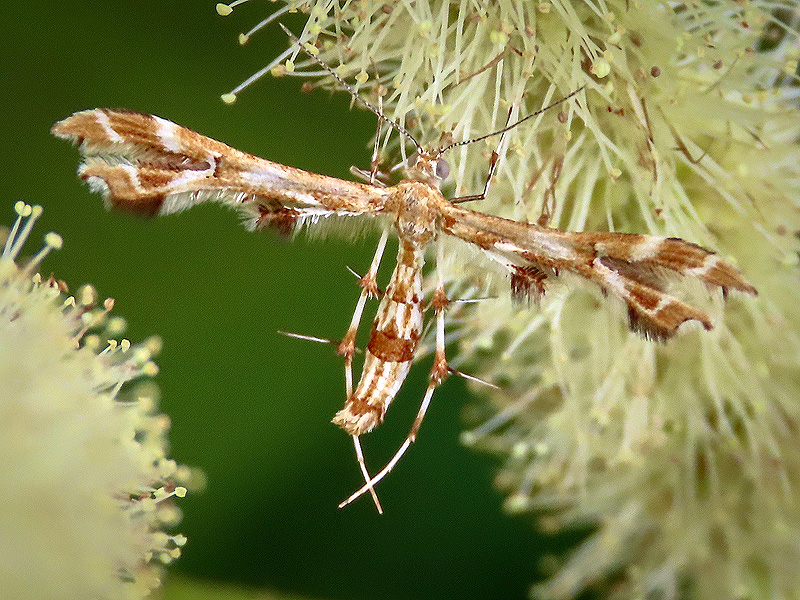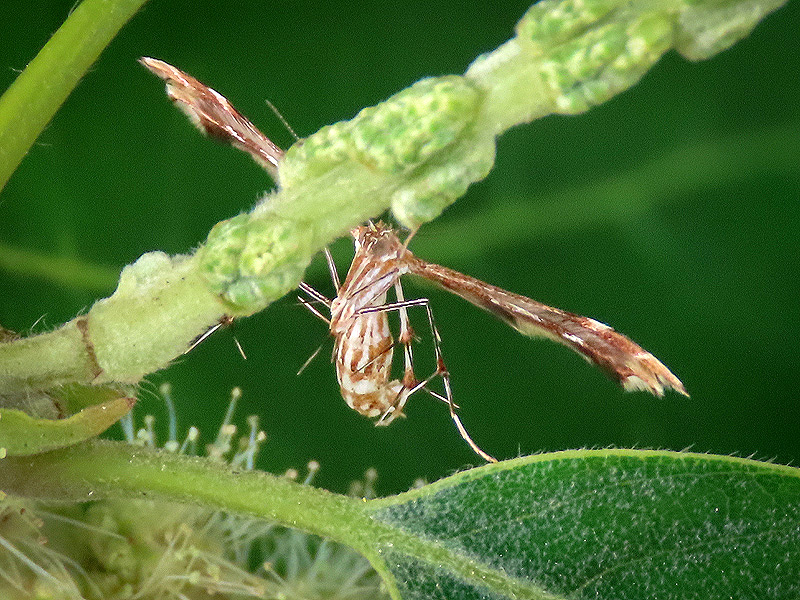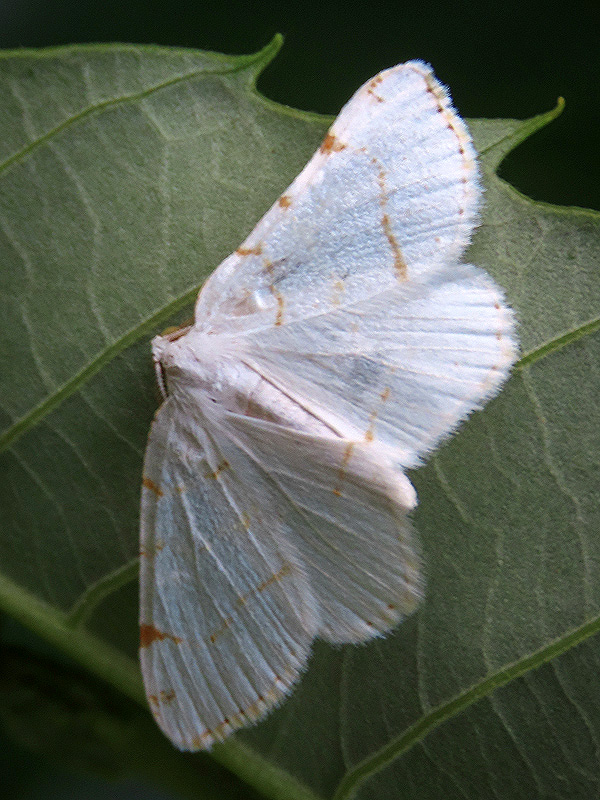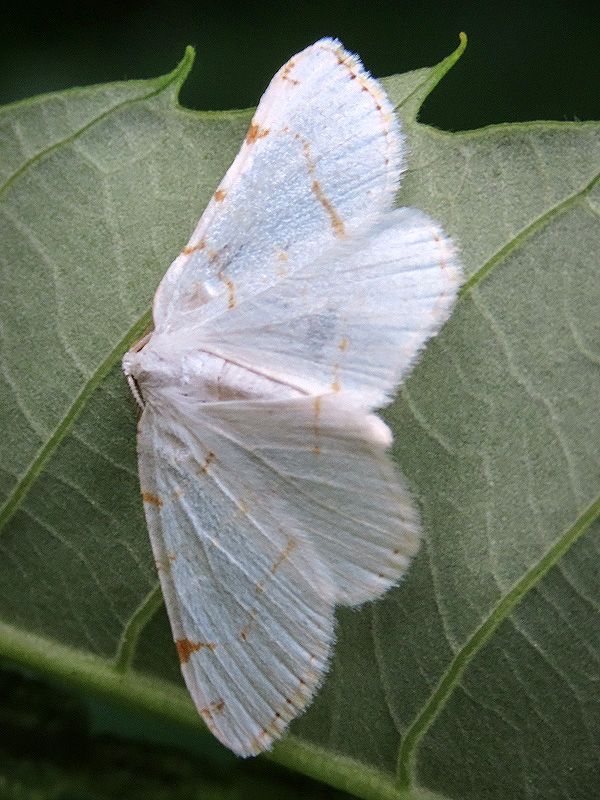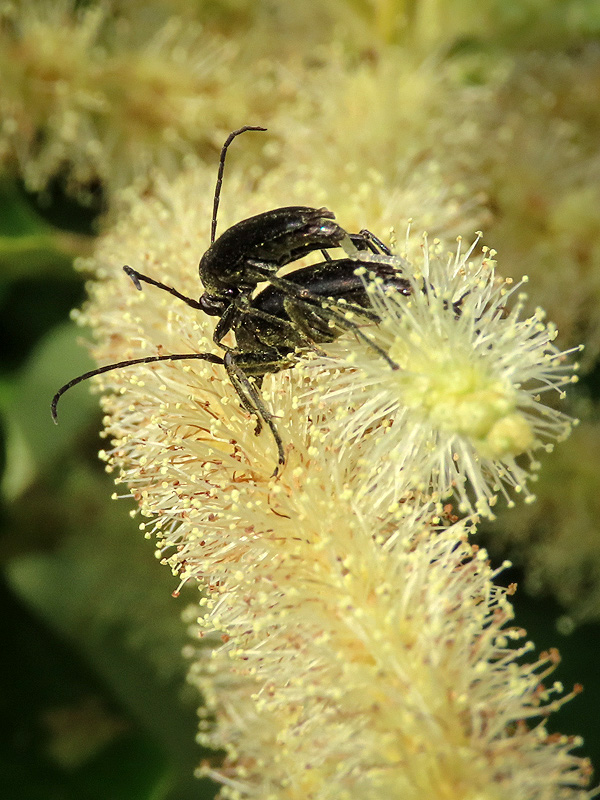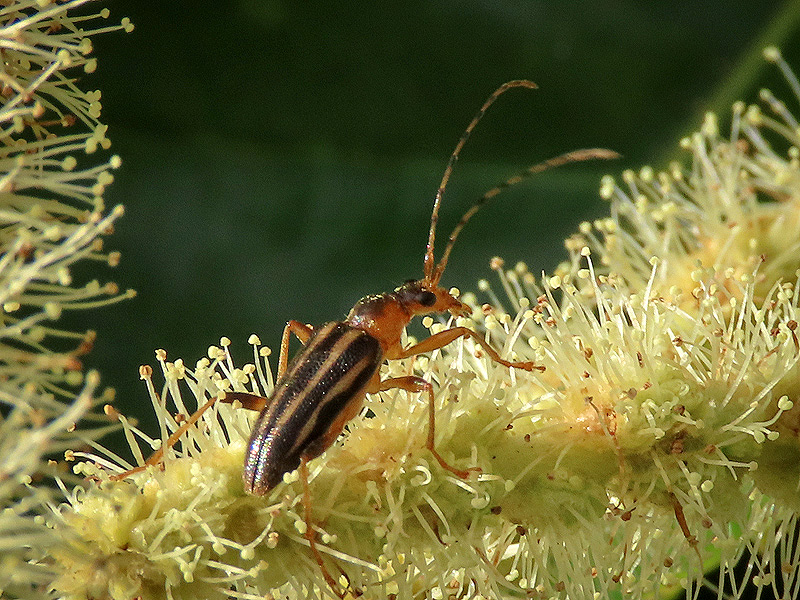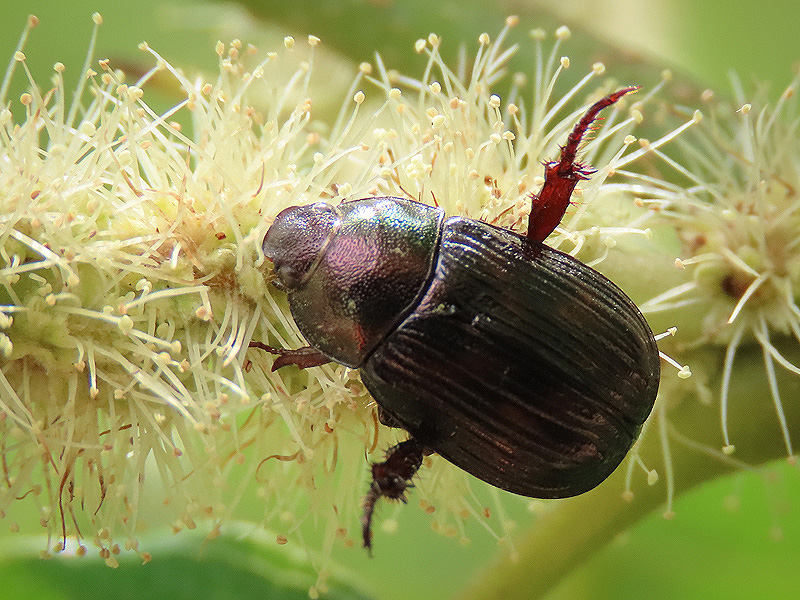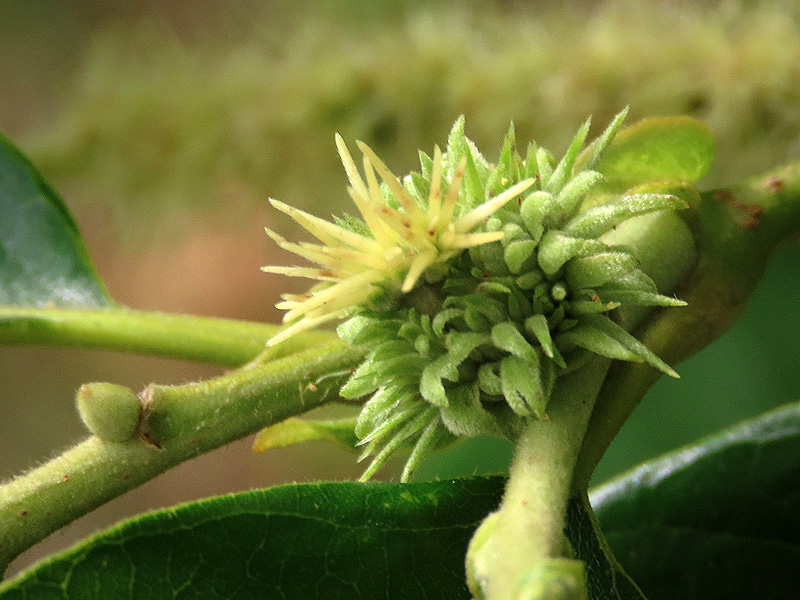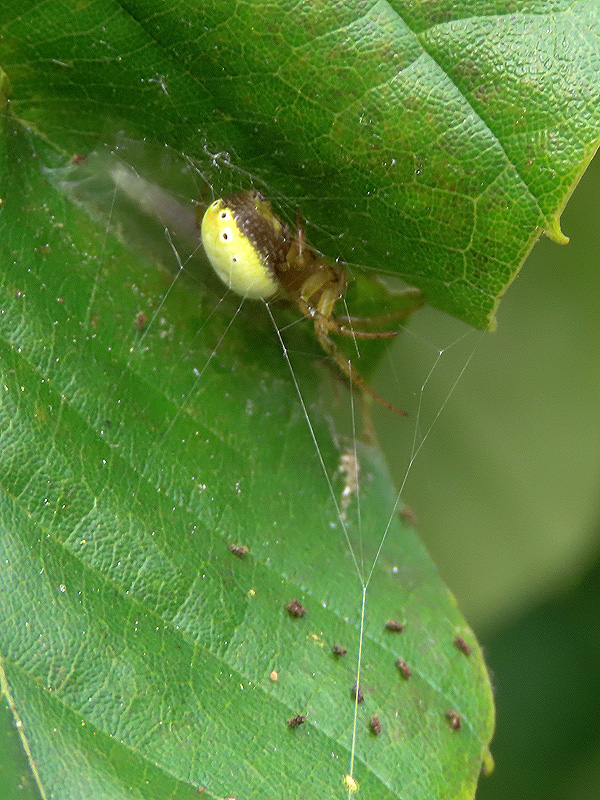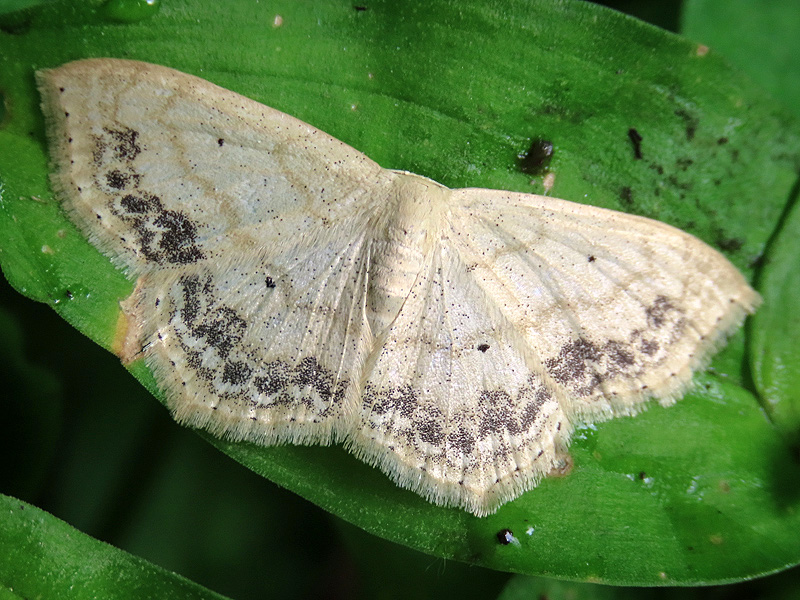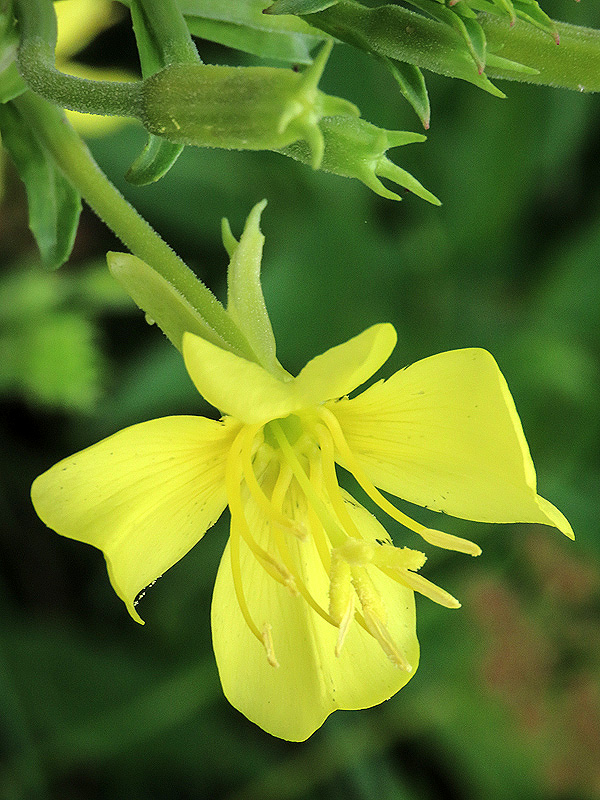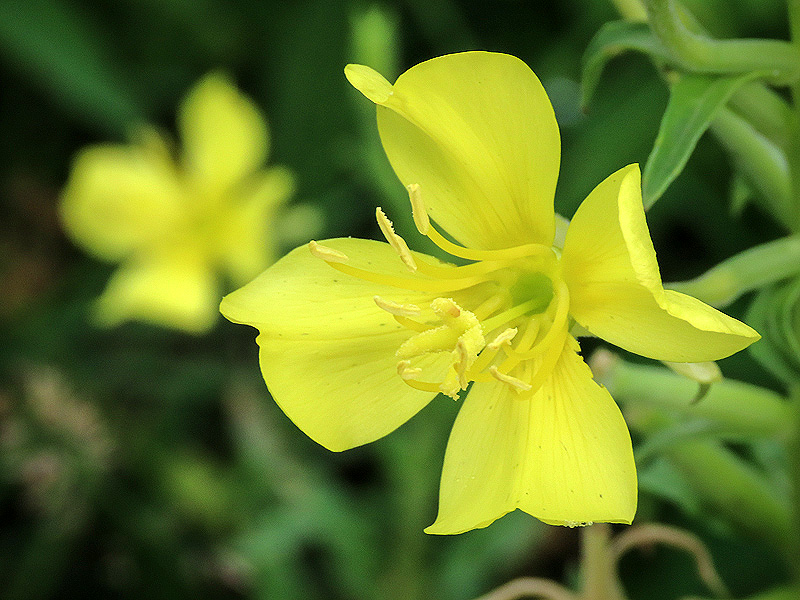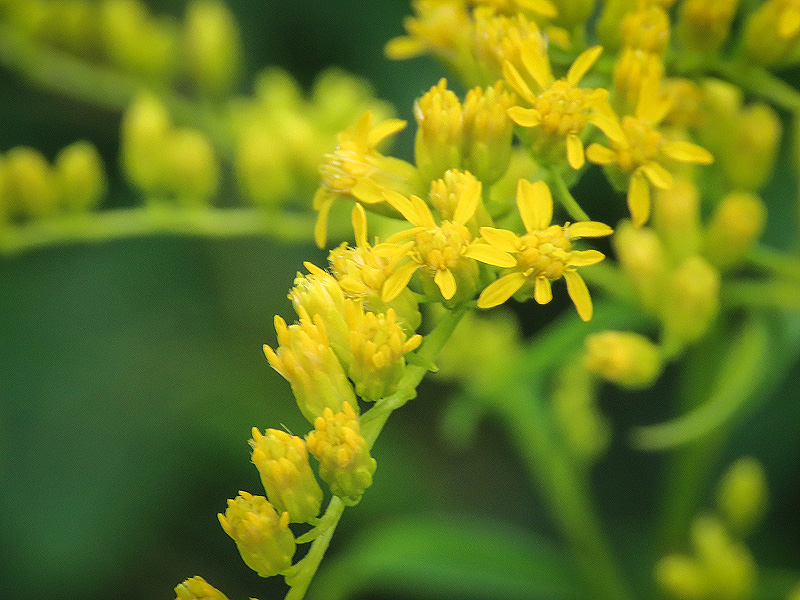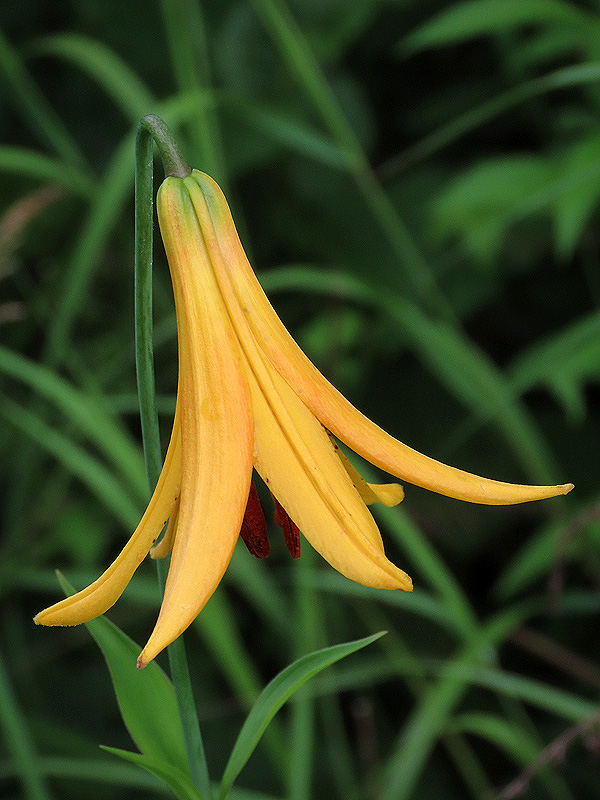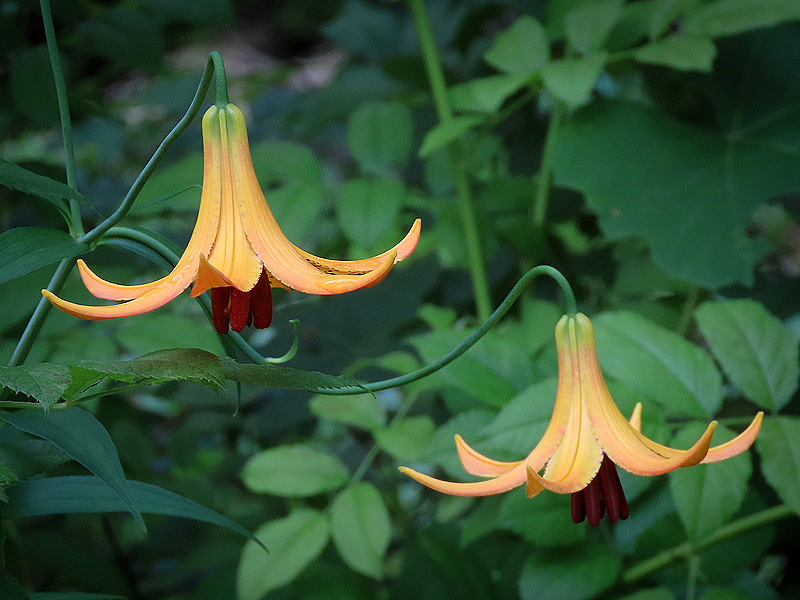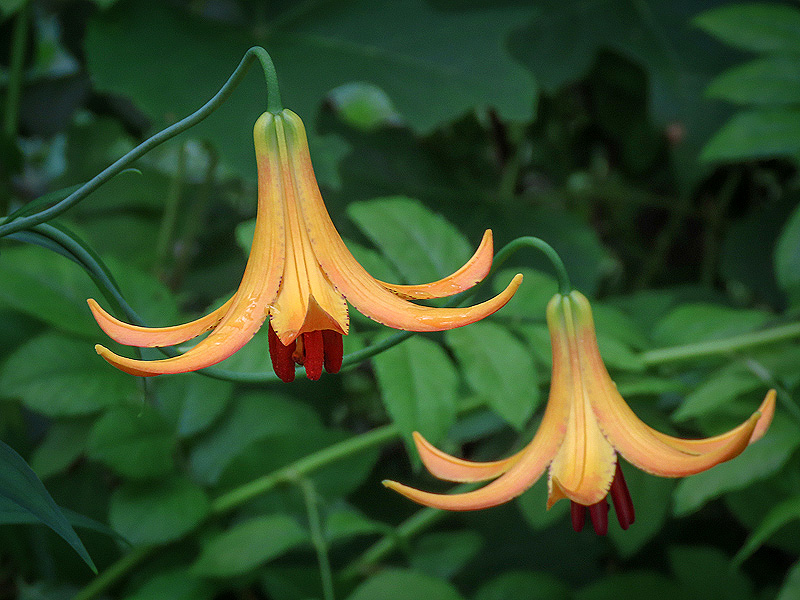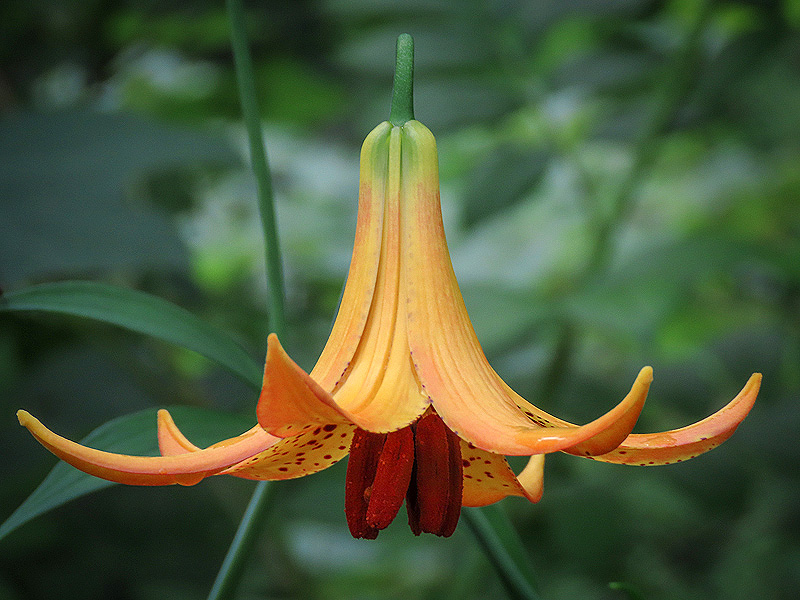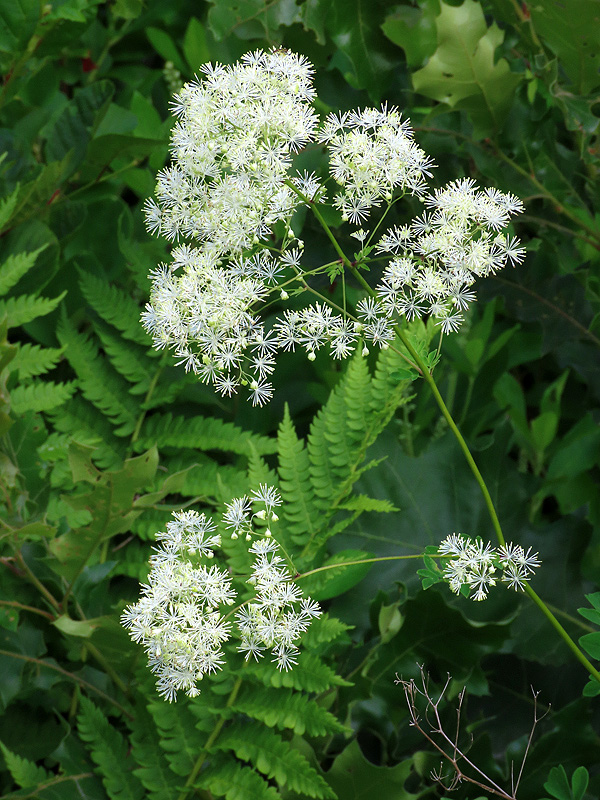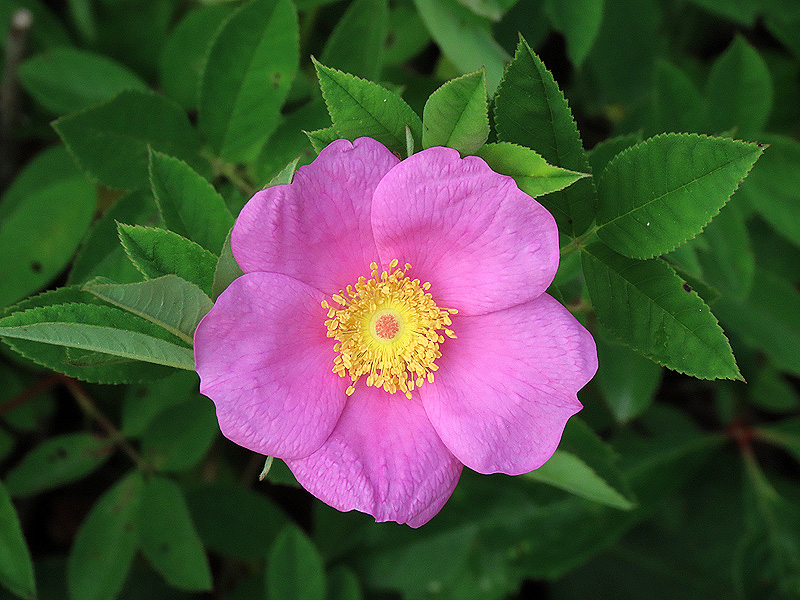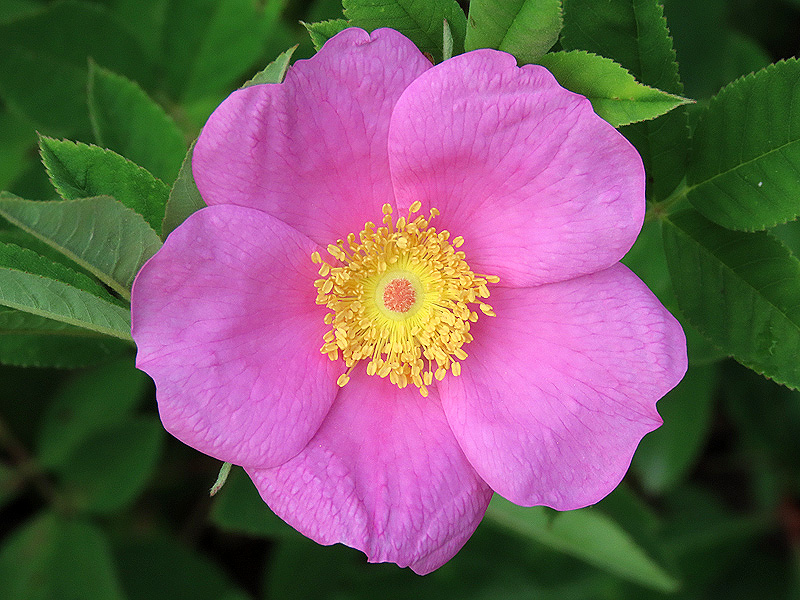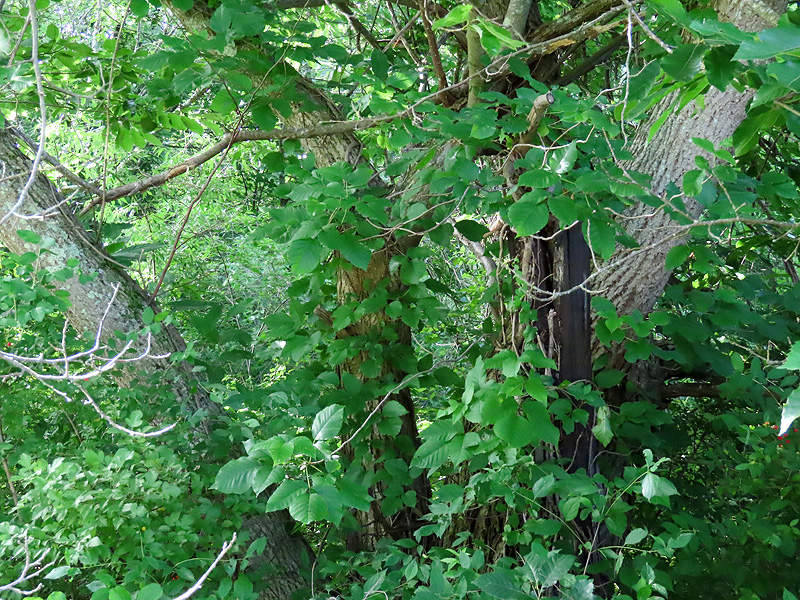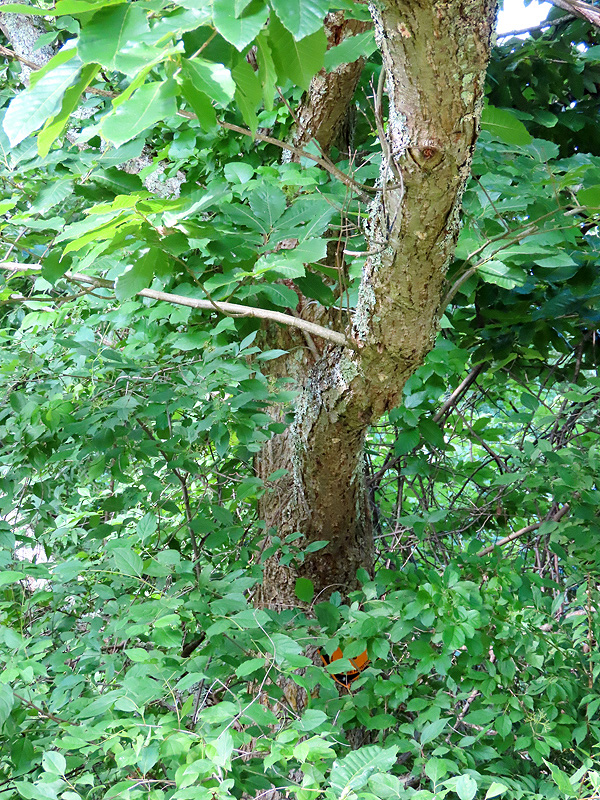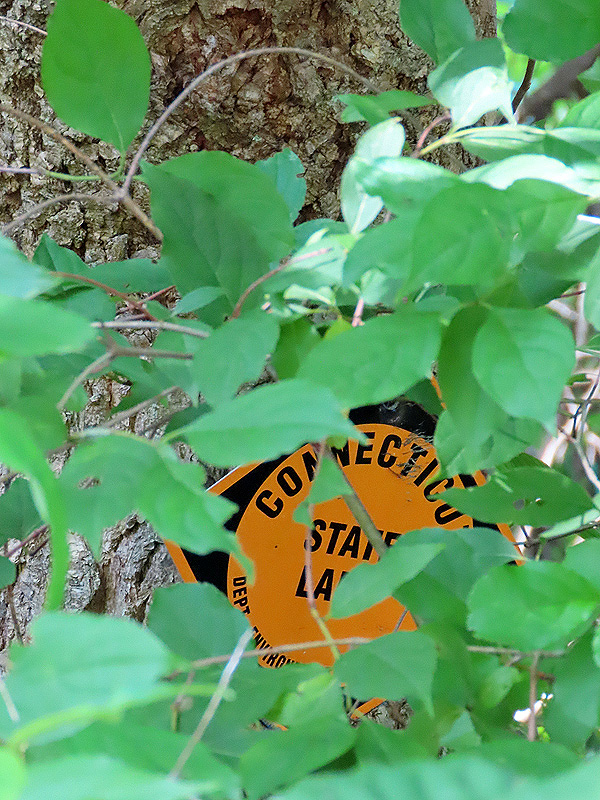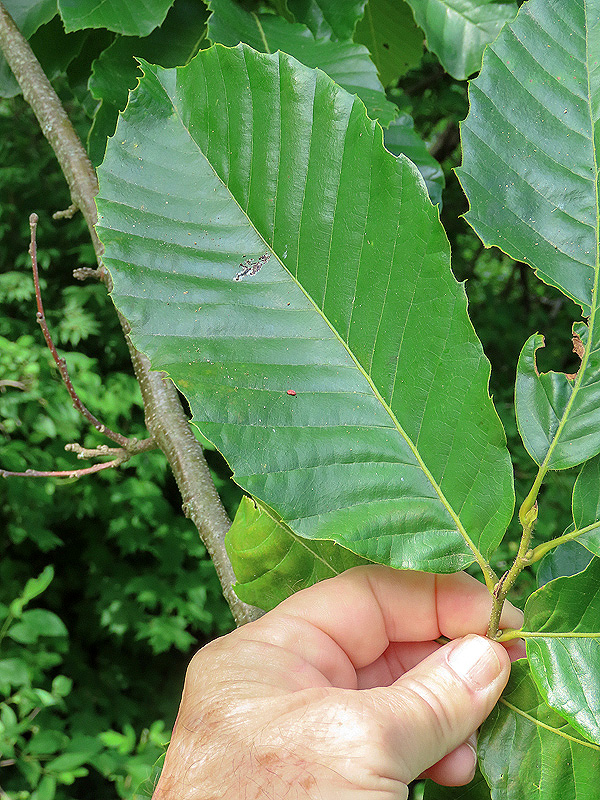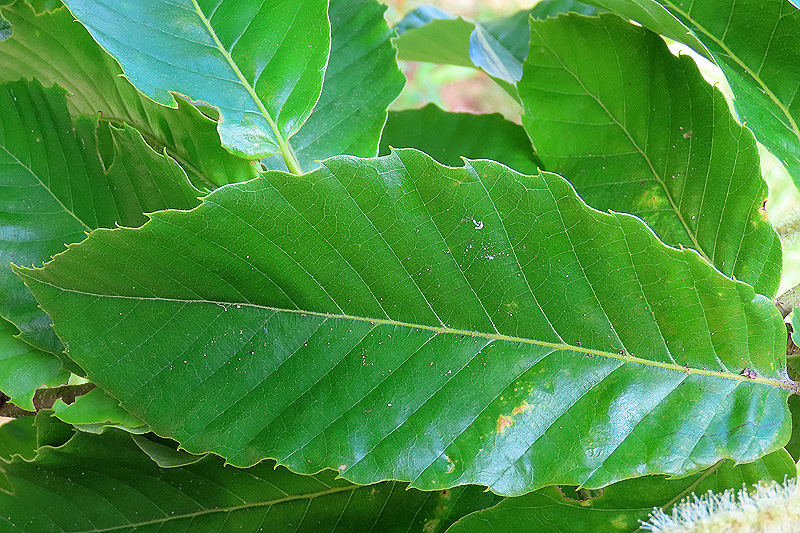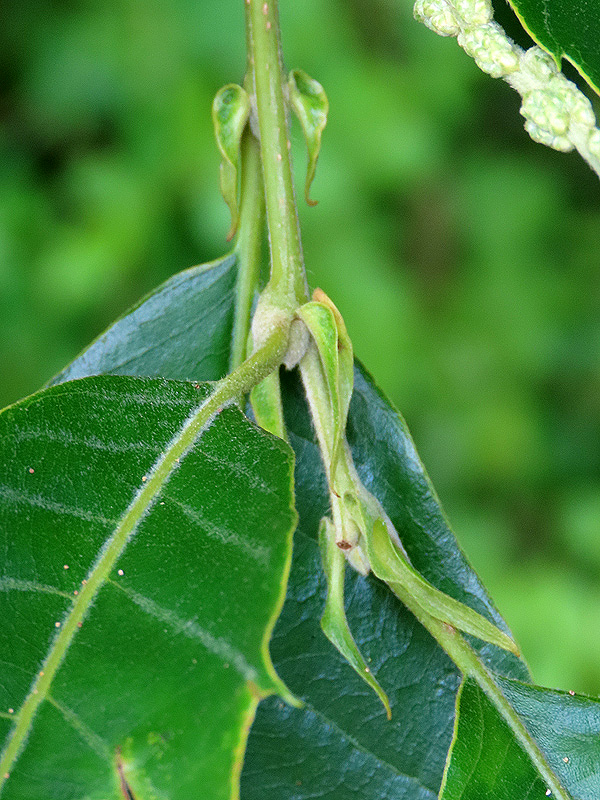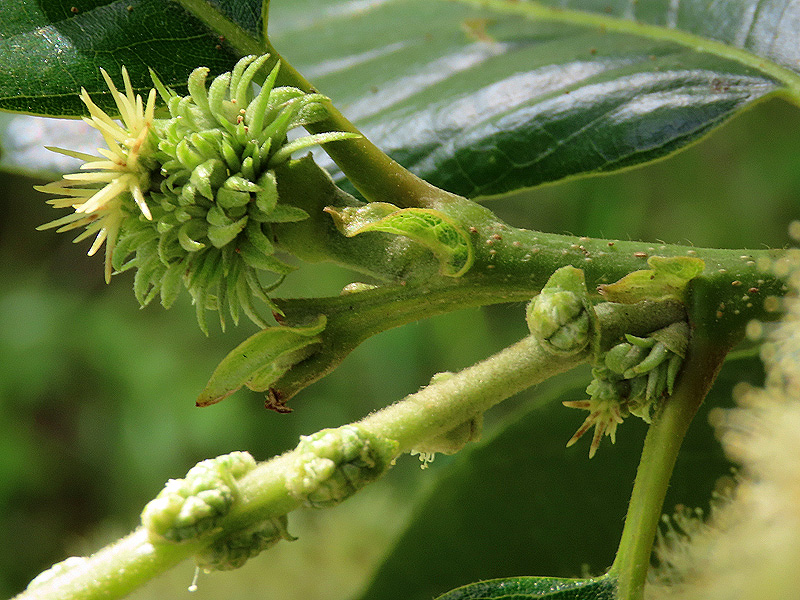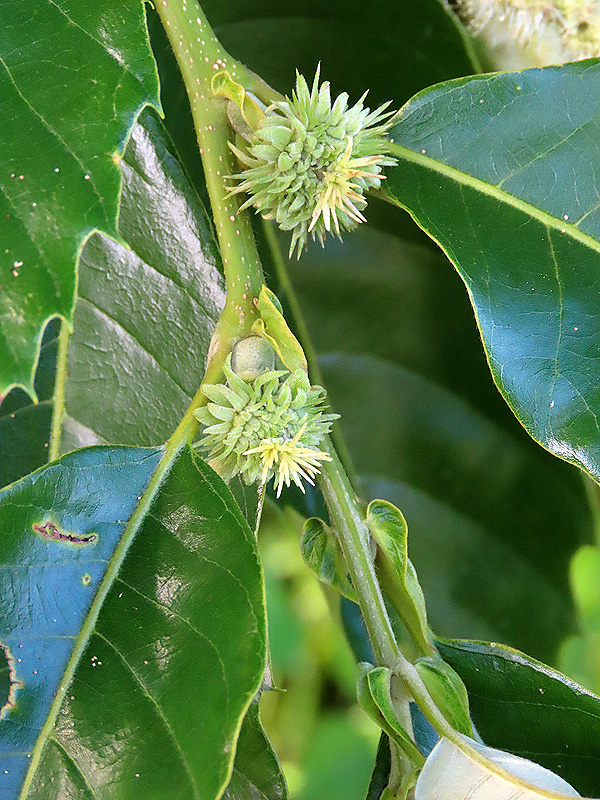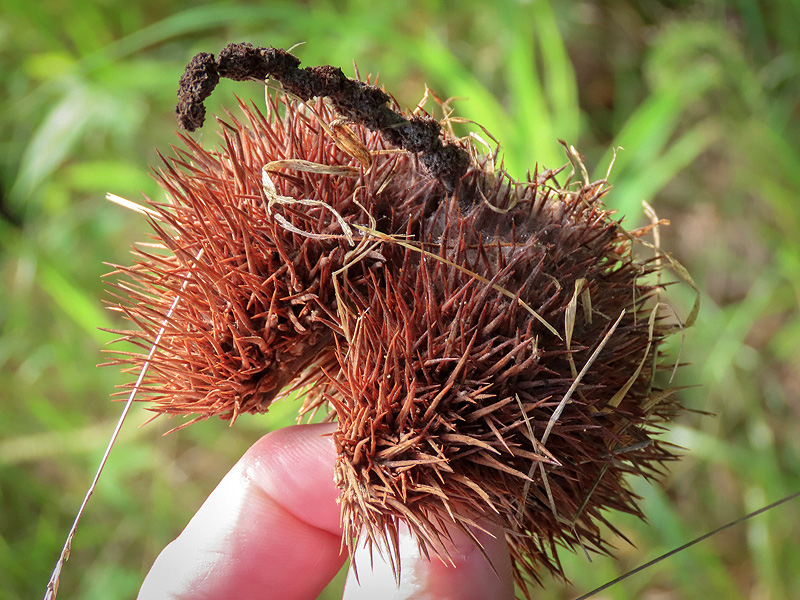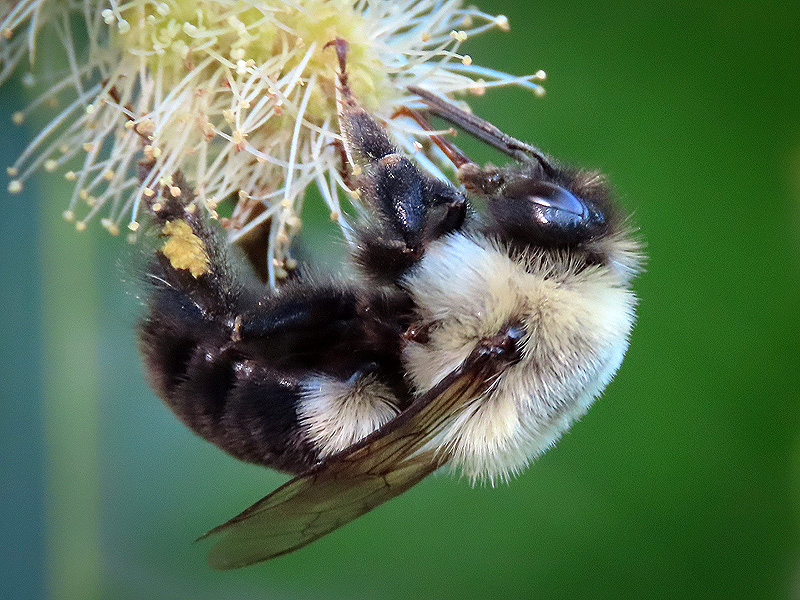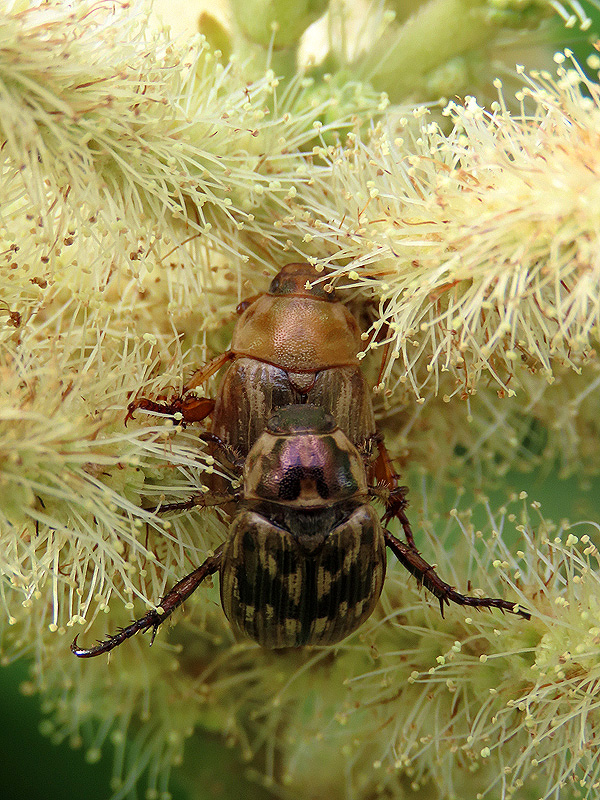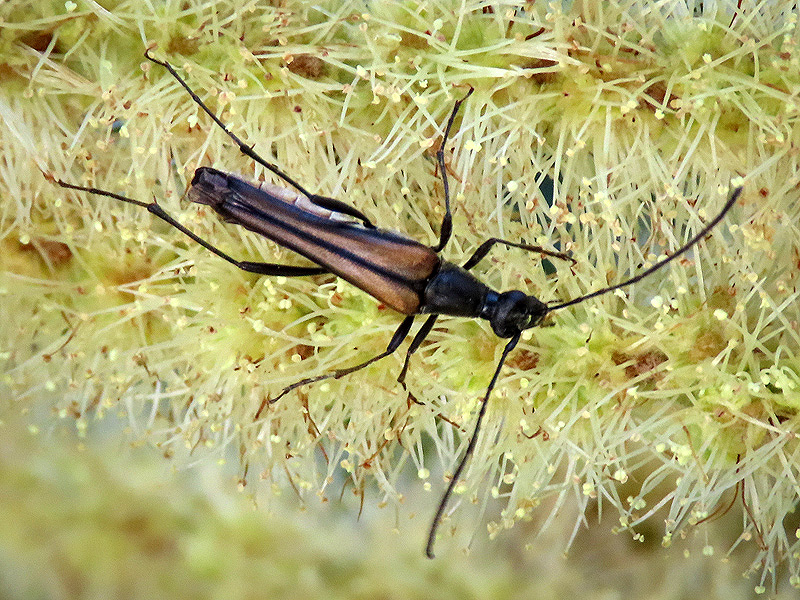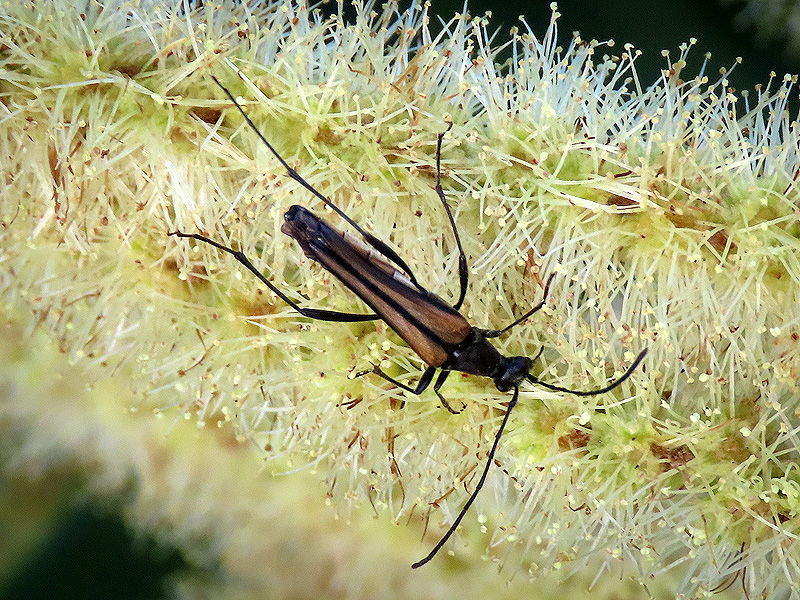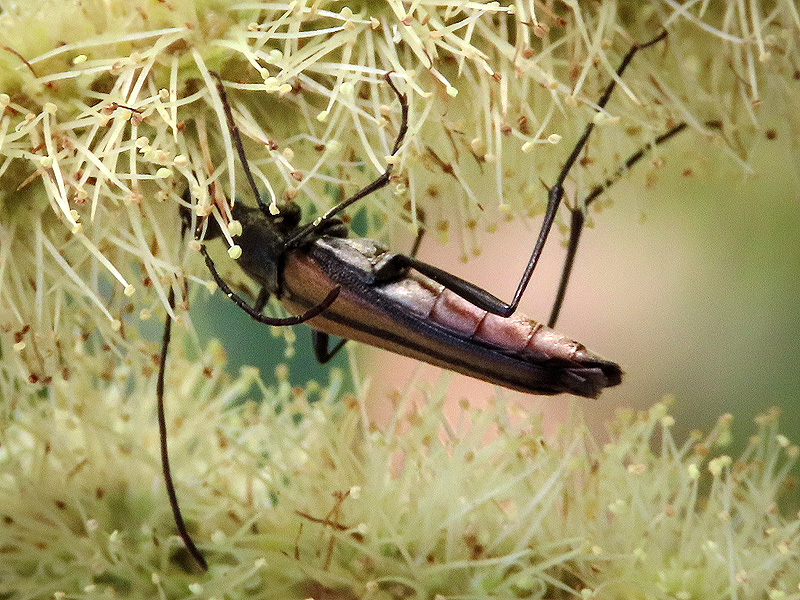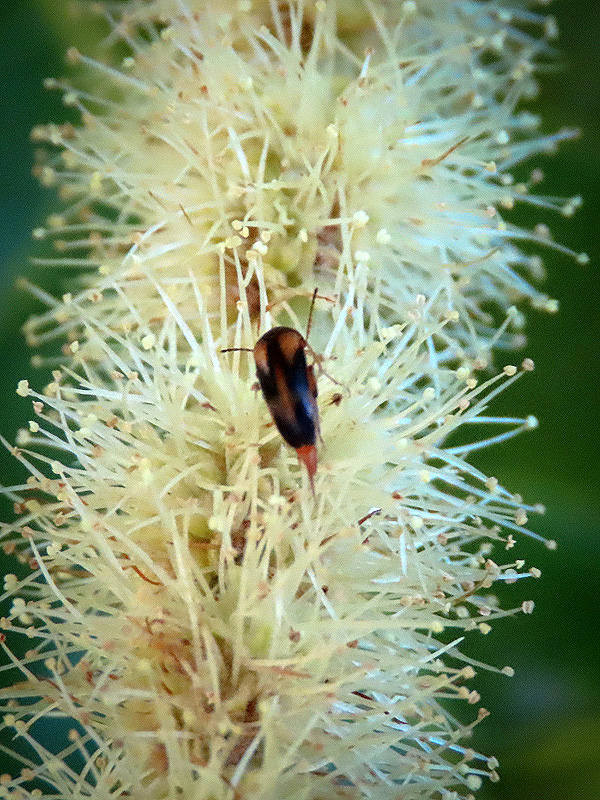Along the Air Line... 2020 - Summer, Part 4 The Air Line Trail in Eastern Connecticut - Stan Malcolm Photos |
HOME: Air Line... 2020 Pages Menu Stan's FlickR Albums |
July 3rd. A stop at the point where the Air Line Trail crosses Route 207 in Hebron, CT. |
...with a solitary bee. Family Andrenidae? |
Chicory (Cichorium intybus)... |
|
|
...with a Sweat Bee (Family Halictidae, Agapostemon virescens). |
|
|
The Chestnut Trees (Castanea sp.) are in full bloom where the trail crosses Route 207. |
You can't imagine the overpowering scent (unless you've smelled it before, in which case, you can't forget it). |
|
Male flowers are all stamens, and... |
...attractive to Bumble Bees (Family Bombidae)... |
|
|
..a Horse Fly (probably Tabanus melanocerus) - check out those fancy eyes!... |
..at least three Plume Moths (Family Pterophoridae, probably Geina sp.)... |
|
|
...a Lesser Maple Spanworm moth (Speranza pustularia)... |
|
...a mated pair of Long-horned Beetles (Family Cerambycidae)... |
...another Long-horned Beetle (Metacmaeops vittata)... |
...and a dark form of the Oriental Beetle (Anomala orientalis). |
The Chestnut's female flowers are quite small and easily missed unless you search for them. |
Also on the Chestnut, a Six-spotted Orbweaver spider (Araniella displicata). |
July 4th. At the Route 85 trailhead, a Large Lace-border (Scopula limboundata). |
Common Evening Primrose (Oenothera biennis) began flowering yesterday. |
|
Goldenrod (Solidago sp.) flowers are just starting to open. |
More Canada Lilies (Lilium canadense) are opening. |
|
|
|
Tall Meadow Rue (Thalictrum polygamum). |
Pasture or Carolina Rose (Rosa carolina). |
|
Back to the Chestnut Trees near the Route 207 crossing. This one has four large healthy trunks, stump sprouted from a fifth dead trunk. |
Nearby another tree has a single trunk but it divides into two not far from the ground. |
It has a Connecticut State Land boundary marker on it. I also saw a seedling tree nearby. |
With yesterday's pictures above, the pictures below, and this web page (https://www.acf.org/resources/identification/chinese-american-chestnuts/), you should be able to tell if this is an American or Chinese Chestnut tree. (Answer at the bottom of this page.) |
|
Hint: note the stipules. |
Hint: Note the bark and lenticles. |
|
|
Bumble Bees (Family Bombidae) were the most common pollen hunters. |
Mating Oriental Beetles (Anomala orientalis), showing more evidence of their variable coloration. |
A very slender Longhorn Beetle (Strangalia acuminata). |
|
|
And I'll end with a Tumbling Flower Beetle (Family Mordellidae). |
Did you identify the Chestnut Tree? Sorry to say, it's a Chinese Chestnut (Castanea mollissima), not the rare survivor of the American Chestnut (Castanea dentata) blight.
|
